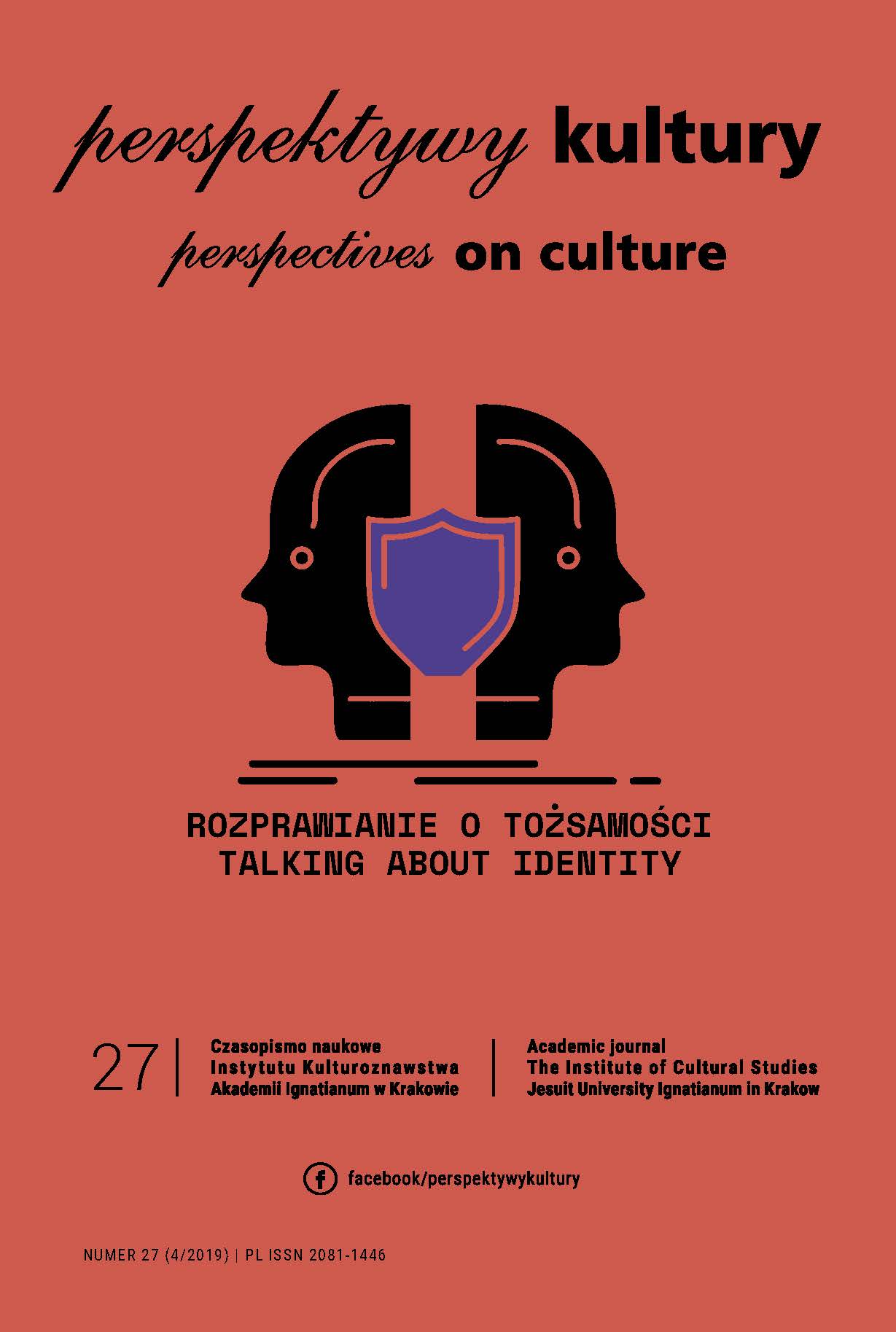Eye-tracking w badaniach kulturowych
Abstrakt
Eye-tracking to technologia, której działanie polega na śledzeniu ruchu gałek ocznych. Wyniki badania pozwalają na szczegółową analizę ścieżki wzroku, udzielają odpowiedzi na pytania, na co patrzymy, na czym skupiamy największą uwagę, a co ignorujemy i czego nie dostrzegamy, pomimo tego, że znajduje się w polu widzenia. Śledzenie ruchu gałek ocznych nie jest technologią nową, jednak stale udoskonalane, zyskuje coraz większe znaczenie w życiu codziennym, wielu dziedzinach nauki i w badaniach rynku konsumenckiego. Współczesna kultura, zorientowana na absorbcję obrazów, jest szczególnie doskonałą płaszczyzną, na której badania eye-trackingowe znajdują wiele często niestandardowych zastosowań.
Bibliografia
Andrzejewski J., Projektowanie użytecznych produktów, Warszawa 2009.
Bergstrom J.R., Duda S., Hawkins D., McGill M., Physiological Response Measurements, in: Eye-tracking in User Experience Design, eds. J.R. Bergstrom, A.J. Schall, Waltham 2014, pp. 93-95 i n.
Duchowski A., Eye-tracking Methodology. Theory and Practice, London 2007.
Eye-tracking in User Experience Design, eds. J.R. Bergstrom, A.J. Schall, Waltham 2014.
Francuz P., IMAGIA. W kierunku neurokognitywnej teorii obrazu, http://new. afterimagia.pl/widzenie
Fua B., Noyb N.F., Storeya M.-A., Eye-tracking the User Experience—An Evaluation of Ontology Visualization Techniques, http://www.semantic-web-journal.net/system/files/swj770.pdf
Goh J.O., Tan J.C., Park D.C., Culture Modulates Eye-Movements to Visual Novelty, Culture Modulates Eye-Movements to Visual Novelty, “PLOS ONE,” 4, 12, 2009, https://journals.plos.org/plosone/article/file?id=10.1371/jour-nal.pone.0008238&type=printable
Gundgaard B., Banner blindness kills your banners, https://www.benjamin-gundgaard.com/banner-blindness-kills-your-banners
Horsley M., Introduction, in: Current Trends in Eye-tracking Research, eds. M. Horsley, M. Eliot, B.A. Knight, R. Reilly, New York 2014.
Jerzyk E., Zastosowanie okulografii w badaniach uwagi wzrokowej konsumentów, “Handel Wewnętrzny,” 2, 371, 2017.
Kasneci E., Kübler T., Broelemann K., Kasneci G., Aggregating physiological and eye-tracking signals to predict perception in the absence of ground truth, “Computers in Human Behavior,” 68, 2017.
Koć-Januchta M., Hoffler T., Thoma G.-B., Prechtl H. i Leutner D., Visualizers versus verbalizers: Effects of cognitive style on learning with texts and pictures—an eye-tracking study, “Computers in Human Behavior,” 68, 2017.
Leutner D., Hoffler T., Koć-Januchta M., More Evidence for Three Types of Cognitive Style. Validating the Object-Spatial Imagery and Verbal Questionnaire Using Eye-tracking when Learning with Texts and Pictures, “Applied Cognitive Psychology,” 31, 2017.
Marcos M.-C., Garcia-Gavilanes R., Bataineh E., Pasarin L., Using Eye-tracking to Identify Cultural Differences in Information Seeking Behavior, http://www.ruthygarcia.com/papers/chi2013.pdf
Opach T., Zastosowanie okulografii (techniki eye-tracking) w kartografii, “Polski Przegląd Kartograficzny,” 43, 2, 2011.
Pater-Ejgierd N., Kultura wizualna a edukacja, Poznań 2010.
Pernice K., Nielsen J., How to Conduct Eye-tracking Studies, Freement 2013.
Ries A., Trout J., 22 niezmienne prawa marketingu, Warszawa 1996.
Rzemieniak M., Badania marketingowe w podejmowaniu decyzji menedżerskich, Lublin 2012.
Schall A., Bergstrom J.R., Introduction to Eye-tracking, in: Eye-tracking in User Experience Design, eds. J.R. Bergstrom, A.J. Schall, Waltham 2014.
Scott N., Green Ch., Fairley S., Investigation of the use of eye-tracking to examine tourism advertising effectiveness, “Current Issues in Tourism,” 19, 7, 2016, pp. 634-642.
Seyda S., Wiśniewska J., Czy twarz naprawdę postrzegana jest jako całość?, “Lingwistyka Stosowana,” 20, 5, 2016.
Shoval N., Ahas R., The use of tracking technologies in tourism research: the first decade, “Tourism Geographies,” 2016, https://www.tandfonline.com/doi/ full/10.1080/ 14616688. 2016.1214977.
Tatler B.W., Kirtley C., Macdonald R.G., Mitchell K.M., Savage S.W., The Active Eye: Perspectives on Eye Movement Research, in: Current Trends in Eye-tracking Research, eds. M. Horsley, M. Eliot, B.A. Knight, R. Reilly, Sydney 2014.
Wade N., Tatler B., The Moving Tablet of the Eye. The Origins of Modern Eye Movement Research, Oxford, 2005.
Zhang B., Seo H.-S., Visual attention toward food-item images can vary as a function of background saliency and culture. An eye-tracking study, “Food Quality and Preference,” 41, 2015.
Copyright (c) 2019 Akademia Ignatianum w Krakowie

Utwór dostępny jest na licencji Creative Commons Uznanie autorstwa – Bez utworów zależnych 4.0 Międzynarodowe.
Autor, zgłaszając swój artykuł, wyraża zgodę na korzystanie przez Wydawnictwo Uniwersystet Ignatianum z utworu na następujących polach eksploatacji:
- utrwalania utworu w formie papierowej, a także na nośniku cyfrowym lub magnetycznym;
- zwielokrotnienia utworu dowolną techniką, bez ograniczenia ilości wydań i liczby egzemplarzy;
- rozpowszechniania utworu i jego zwielokrotnionych egzemplarzy na jakimkolwiek nośniku, w tym wprowadzenia do obrotu, sprzedaży, użyczenia, najmu;
- wprowadzenia utworu do pamięci komputera;
- rozpowszechniania utworu w sieciach informatycznych, w tym w sieci Internet;
- publicznego wykonania, wystawienia, wyświetlenia, odtworzenia oraz nadawania i reemitowania, a także publicznego udostępniania utworu w taki sposób, aby każdy mógł mieć do niego dostęp w miejscu i czasie przez siebie wybranym.
Wydawca zobowiązuje się szanować osobiste prawa autorskie do utworu.





